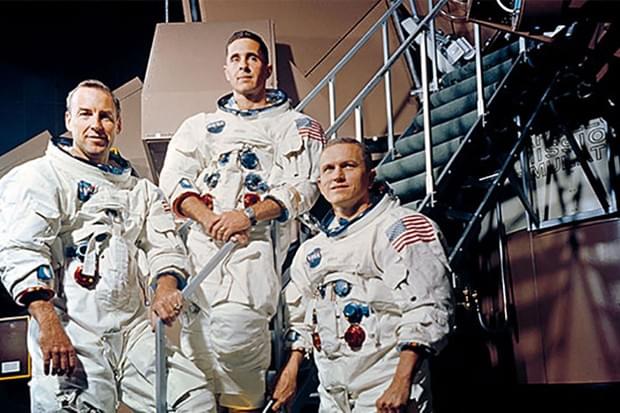Dec 1, 2021
NASA probe breaks two world records, now fastest object ever built
Posted by Alberto Lao in category: space
NASA’s Parker Solar Probe has completed a record-setting swing by the Sun, breaking two world records while making its pass.
NASA’s Parker Solar Probe has completed a record-setting swing by the Sun, breaking two world records while making its pass.
NASA and the U.S. Dept. of Energy have come together to solicit design proposals for a nuclear reactor that will power Lunar and Martian exploration!
Over the next fifteen years, multiple space agencies and their commercial partners intend to mount crewed missions to the Moon and Mars. In addition to placing “footprints and flags” on these celestial bodies, there are plans to establish the infrastructure to allow for a long-term human presence. To meet these mission requirements and ensure astronaut safety, several technologies are currently being researched and developed.
At their core, these technologies are all about achieving self-sufficiency in terms of resources, materials, and energy. To ensure that these missions have all the energy they need to conduct operations, NASA is developing a Fission Surface Power (FSP) system that will provide a safe, efficient, and reliable electricity supply. In conjunction with solar cells, batteries, and fuel cells, this technology will allow for long-term missions to the Moon and Mars in the near future.
Continue reading “NASA is Building a Nuclear Reactor to Power Lunar and Martian Exploration!” »
NASA’s Europa Clipper scientists are devising a variety of creative strategies to find active plumes when the spacecraft arrives at this moon of Jupiter in 2030, though they’re not relying on plumes to understand what’s going on inside Europa.
On Christmas Eve 1968, the first mission to the Moon changed how we view our home planet forever.

On Christmas Eve, three days after its launch, Apollo 8 reached its destination, successfully carrying humans closer to the Moon than ever before. Finally, the US had beaten the Soviets to a major lunar milestone.
It would have been possible for the crew to simply loop around the Moon and come straight back to Earth. But since the mission was running smoothly (bar a case of space sickness on the part of Commander Frank Borman), the order was given to enter lunar orbit.
Continue reading “Apollo 8: the Christmas mission around the Moon” »
It will take a lot to get to Mars.
SpaceX CEO Elon Musk wants to send humans to Mars and beyond, but he may face a hurdle on Earth first.
Scientists in California tried to study Alzheimer’s disease from a different perspective and the results may have led them to the cause of the disease.
Researchers at the University of California-Riverside (UCR) recently published results from a study that looked at a protein called tau. By studying the different forms tau proteins take, researchers discovered the difference between people who developed dementia and those who didn’t.
The tau protein was critical for researchers because they wanted to understand what the protein could reveal about the mechanism behind plaques and tangles, two critical indicators doctors look for when diagnosing people with Alzheimer’s.
Elon Musk thinks SpaceX needs to ramp up production of its next-generation Raptor engine soon or face potentially dire consequences, according to media reports.
Raptors will power Starship, the huge, fully reusable vehicle that SpaceX is developing to take people and cargo to the moon, Mars and other distant destinations. Each Starship will need a lot of Raptors — 33 for the giant first-stage booster, called Super Heavy, and six for the upper-stage spacecraft, known as Starship.
An asteroid the size of the Eiffel Tower is heading towards Earth this month and it’s considered an especially unique piece of rock by scientists.
The asteroid 4,660 Nereus is classified as a “potentially hazardous” piece of rock because of its proximity to Earth. On Dec. 11, NASA expects it to be at its closest point to Earth over a 20-year period. The asteroid was discovered back in 1982.
The race to find medical treatments for Covid-19—and future pandemics—is on, driving renewed investments by the healthcare and pharmaceutical industries in Real-World Data (RWD) and Real-World Evidence (RWE). A new report on AI and the real-world studies industry, from Deep Pharma Intelligence (DPI), Evomics Medical and The Yuan (an online forum focused on AI in healthcare, for which I am a contributor), provides fresh insights into this rapidly evolving patient-centric approach to increasing R&D efficiency, accelerating the introduction of new drugs, and improving health outcomes. Full Story:
Qualcomm kicked off its annual Snapdragon Technology Summit with its new premium smartphone SoC dubbed the Snapdragon Series 8 Gen 1. As expected, the new SoC improves performance and efficiency in every aspect of the chip, but enhancements in AI and image processing are especially important for the next generation of premium smartphones.
The new Series 8 Gen 1 SoC follows the previous Snapdragon 888 generation as Qualcomm’s premium smartphone SoC. And yes, there is a new naming convention with this generation. Rather than continuing to count up until the company runs out of numbers for new products, Qualcomm changed the naming convention to that basic series number (Series, 8, 7, 6, and 4) followed by a generational number, similar to what the company began doing with its Snapdragon 8CX SoCs for PCs. Since this is the first generation of smartphone SoCs to use the new nomenclature, the new family of devices will be “Gen 1”. For now, however, the company only announced the premium chip — the Series 8 Gen 1.
Full Story:
